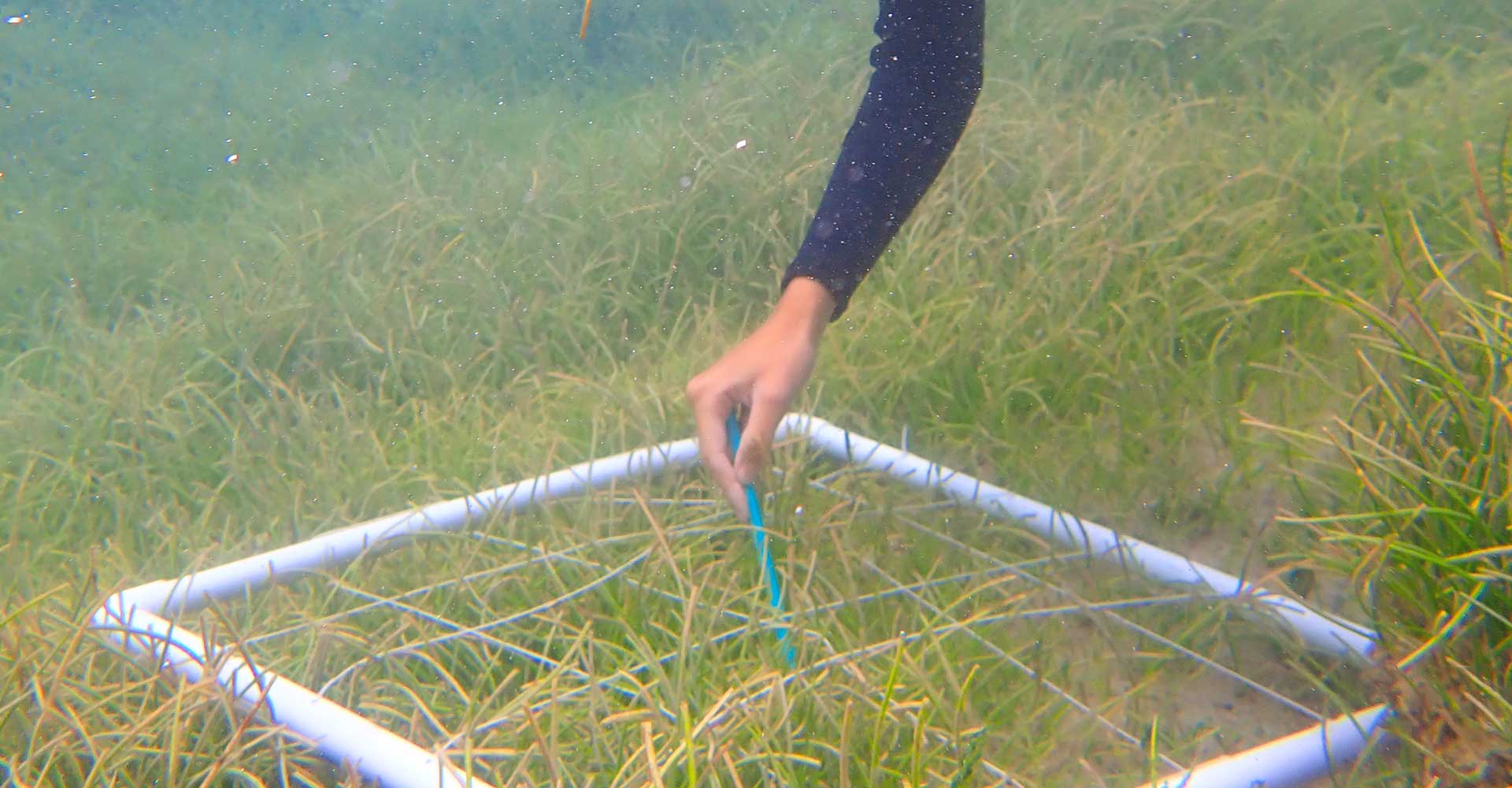Scotland's Coastal Revival: The Promise Of Seagrass Restoration

Table of Contents
The Ecological Importance of Seagrass in Scotland's Coastal Waters
Seagrass meadows are often called the "lungs of the sea," and for good reason. These underwater flowering plants play a vital role in supporting Scotland's rich coastal biodiversity. Their dense, waving leaves provide critical habitat for a multitude of species:
- Nurseries for fish and shellfish: Many commercially important fish species, such as cod and plaice, rely on seagrass meadows as spawning and nursery grounds. Similarly, various shellfish species find refuge and food within these underwater grasslands.
- Haven for birds: Seabirds depend on the abundant life within seagrass meadows for food, using the areas for foraging and resting.
- Carbon sequestration powerhouses: Seagrass meadows are incredibly efficient at absorbing carbon dioxide from the atmosphere, storing it in their sediments – a process known as "blue carbon." This contributes significantly to mitigating climate change.
- Coastal protection: The dense root systems of seagrass stabilize sediments, reducing coastal erosion and attenuating wave energy, offering natural protection to our shorelines. This is particularly important in the face of rising sea levels and increased storm intensity.
These seagrass meadows are integral components of healthy coastal ecosystems, providing crucial services for both marine life and human communities. Their role in carbon sequestration and coastal protection cannot be overstated. The contribution of these vital underwater plants to blue carbon sinks is vital in the fight against climate change.
Current State of Seagrass in Scotland: Challenges and Threats
Despite their importance, Scotland's seagrass meadows are facing significant decline. A range of human activities and environmental pressures contribute to this worrying trend:
- Pollution: Runoff from agriculture and industry introduces excess nutrients and pollutants into coastal waters, harming seagrass growth and health. Areas like the Firth of Clyde and Moray Firth have seen notable impacts.
- Dredging: Dredging activities for navigation and other purposes directly destroy seagrass beds and disrupt the sediment, impacting their ability to recover.
- Boating impacts: Boat anchors and propellers can physically damage seagrass, leading to fragmentation and loss of habitat.
- Climate change: Rising sea temperatures and ocean acidification are placing additional stress on these delicate ecosystems.
The extent of seagrass decline in Scotland is concerning, though precise figures are difficult to obtain due to limited historical data. However, anecdotal evidence and localized studies point to significant habitat loss in various areas. Addressing these environmental threats is crucial for the future of our coastal ecosystems.
Seagrass Restoration Techniques and Projects in Scotland
Fortunately, effective seagrass restoration techniques are being developed and implemented in Scotland. Various methods are employed:
- Seed dispersal: Collecting and sowing seagrass seeds in degraded areas is a promising approach.
- Transplanting: Transplanting healthy seagrass shoots from thriving areas to degraded sites can help re-establish meadows.
- Habitat creation: Creating artificial habitats to encourage seagrass colonization can accelerate restoration efforts.
Several organizations are actively involved in seagrass restoration projects across Scotland. These initiatives, while facing challenges such as site selection, securing sufficient funding, and long-term monitoring, represent a crucial step toward recovery. Overcoming these challenges requires collaborative efforts, innovative techniques, and continued investment.
The Economic and Social Benefits of Seagrass Restoration
Investing in seagrass restoration isn't just an ecological imperative; it also offers substantial economic and social benefits:
- Fisheries enhancement: Restored seagrass meadows will boost fish populations, benefiting local fishing communities and economies.
- Tourism: Healthy coastal ecosystems attract tourists, supporting local businesses and creating jobs. The improved water quality and biodiversity are attractive to eco-tourists.
- Carbon credit markets: The carbon sequestration capacity of seagrass can generate revenue through carbon credit schemes, providing financial incentives for restoration efforts.
- Community involvement: Seagrass restoration projects often engage local communities, fostering a sense of ownership and environmental stewardship. This contributes to improved social benefits.
These benefits highlight the long-term sustainability of investing in seagrass restoration. The positive ripple effects extend beyond the environmental realm, positively impacting local economies and communities.
Conclusion: Investing in Scotland's Coastal Future through Seagrass Restoration
The importance of Seagrass Restoration in Scotland cannot be overstated. These underwater meadows are crucial for maintaining biodiversity, protecting our coastlines, and mitigating climate change. The ecological, economic, and social benefits of restoring these vital habitats are numerous and far-reaching. We urgently need continued investment and support for seagrass restoration initiatives in Scotland. Let's work together to protect our precious coastal ecosystems and secure a healthy future for Scotland's seas. Learn more about ongoing projects, support relevant organizations, or even volunteer – become part of the movement to revitalize Scotland's coast through seagrass restoration. Help us protect Scotland's coast with seagrass restoration and ensure a thriving marine environment for generations to come.

Featured Posts
-
 To Forema Tis Emma Stooyn Mia Anatreptiki Epilogi Poy Syziteitai
May 05, 2025
To Forema Tis Emma Stooyn Mia Anatreptiki Epilogi Poy Syziteitai
May 05, 2025 -
 May 2025 Ufc Fight Nights Events Dates And Fighters
May 05, 2025
May 2025 Ufc Fight Nights Events Dates And Fighters
May 05, 2025 -
 Teddy Magics Britains Got Talent Appearance Sparks Outrage
May 05, 2025
Teddy Magics Britains Got Talent Appearance Sparks Outrage
May 05, 2025 -
 Australian Election Results Implications For The Global Anti Trump Movement
May 05, 2025
Australian Election Results Implications For The Global Anti Trump Movement
May 05, 2025 -
 Ufc 313 Dfs Pereira Vs Ankalaev Fight Card Predictions And Picks
May 05, 2025
Ufc 313 Dfs Pereira Vs Ankalaev Fight Card Predictions And Picks
May 05, 2025
Latest Posts
-
 Max Verstappen Welcomes First Child Before Miami Grand Prix
May 05, 2025
Max Verstappen Welcomes First Child Before Miami Grand Prix
May 05, 2025 -
 Max Verstappen And Kelly Piquet Announce Birth Of Daughter Lily
May 05, 2025
Max Verstappen And Kelly Piquet Announce Birth Of Daughter Lily
May 05, 2025 -
 Miami Grand Prix Verstappens Double Celebration
May 05, 2025
Miami Grand Prix Verstappens Double Celebration
May 05, 2025 -
 Formula 1 News Verstappen And Piquet Become Parents To Daughter Lily
May 05, 2025
Formula 1 News Verstappen And Piquet Become Parents To Daughter Lily
May 05, 2025 -
 Max Verstappens New Role Father And Racing Driver
May 05, 2025
Max Verstappens New Role Father And Racing Driver
May 05, 2025
